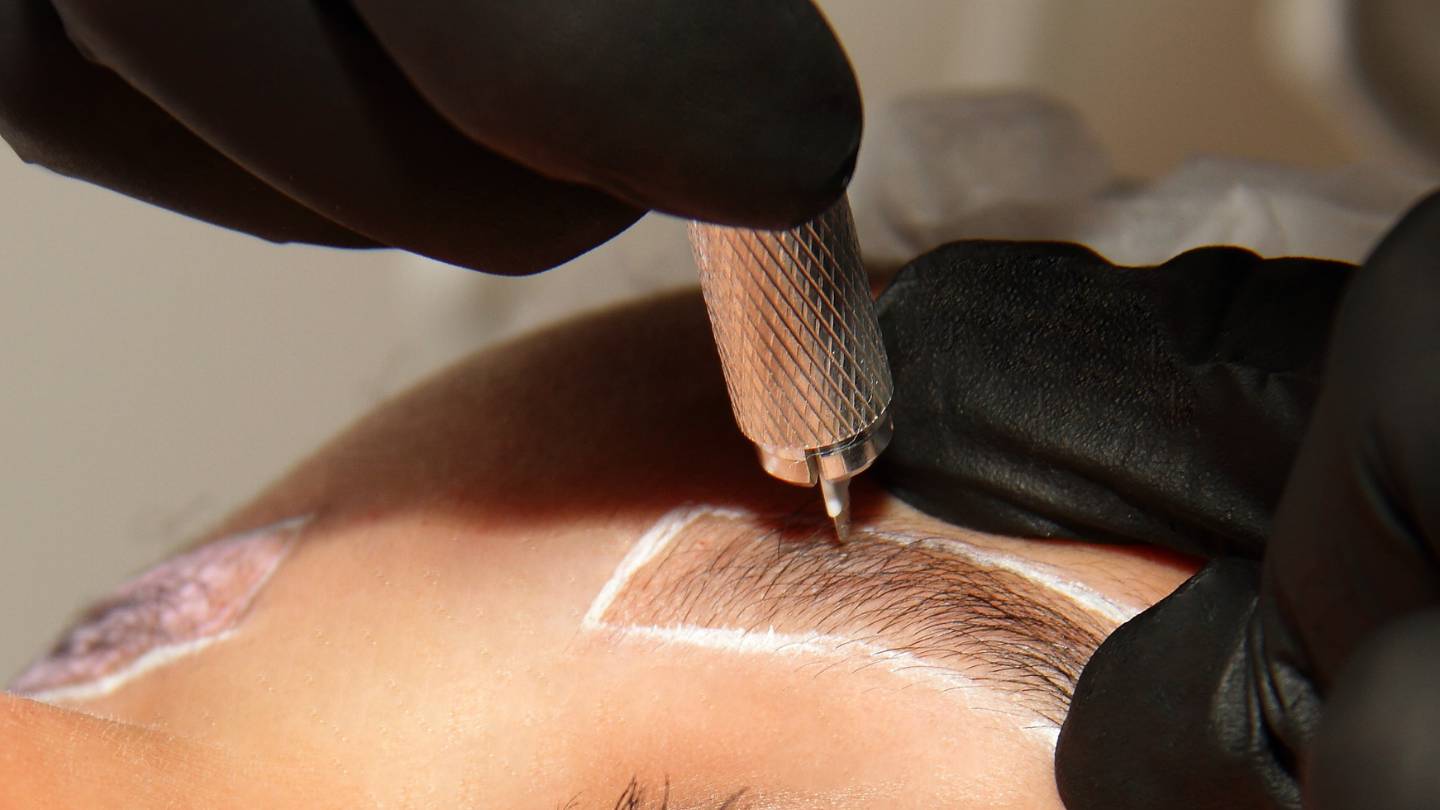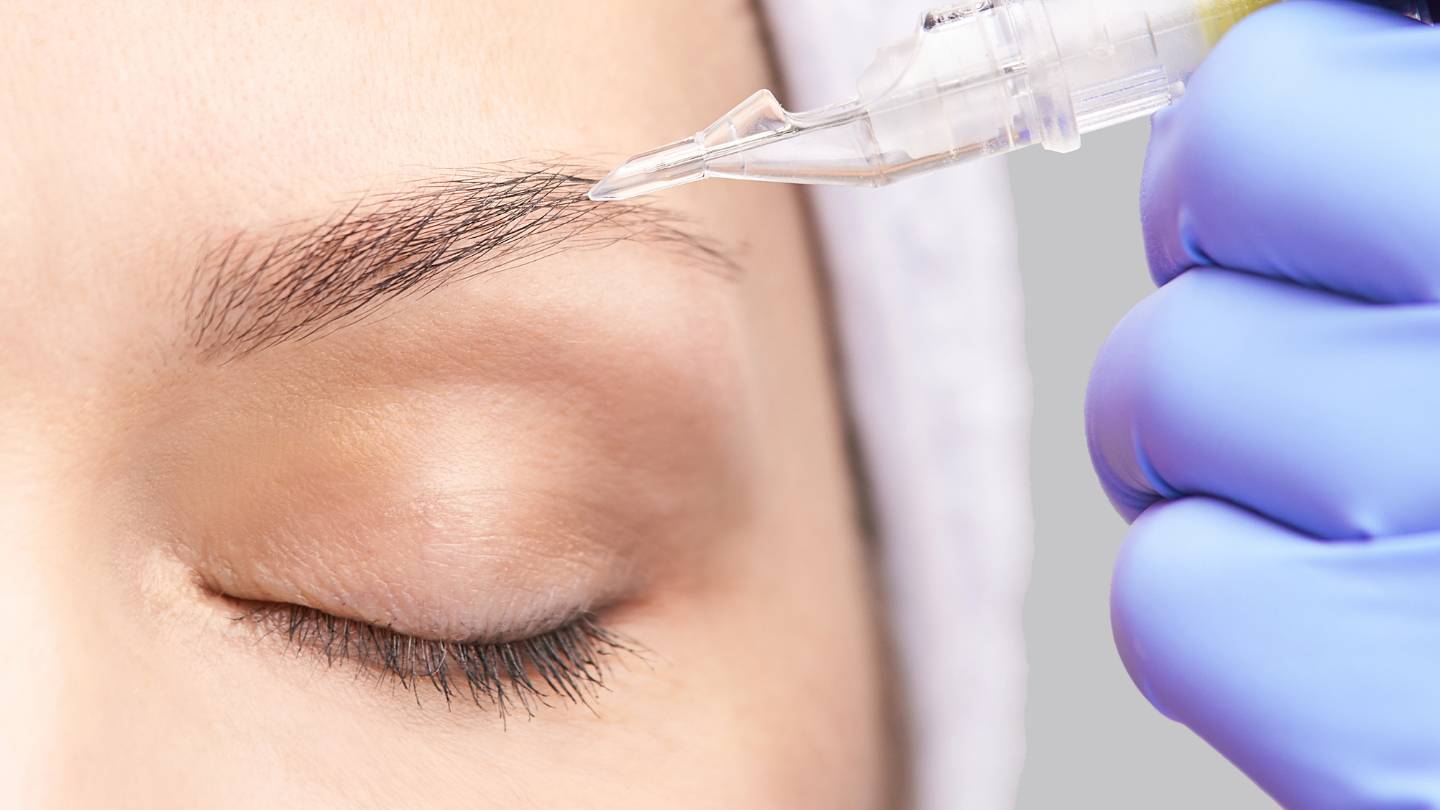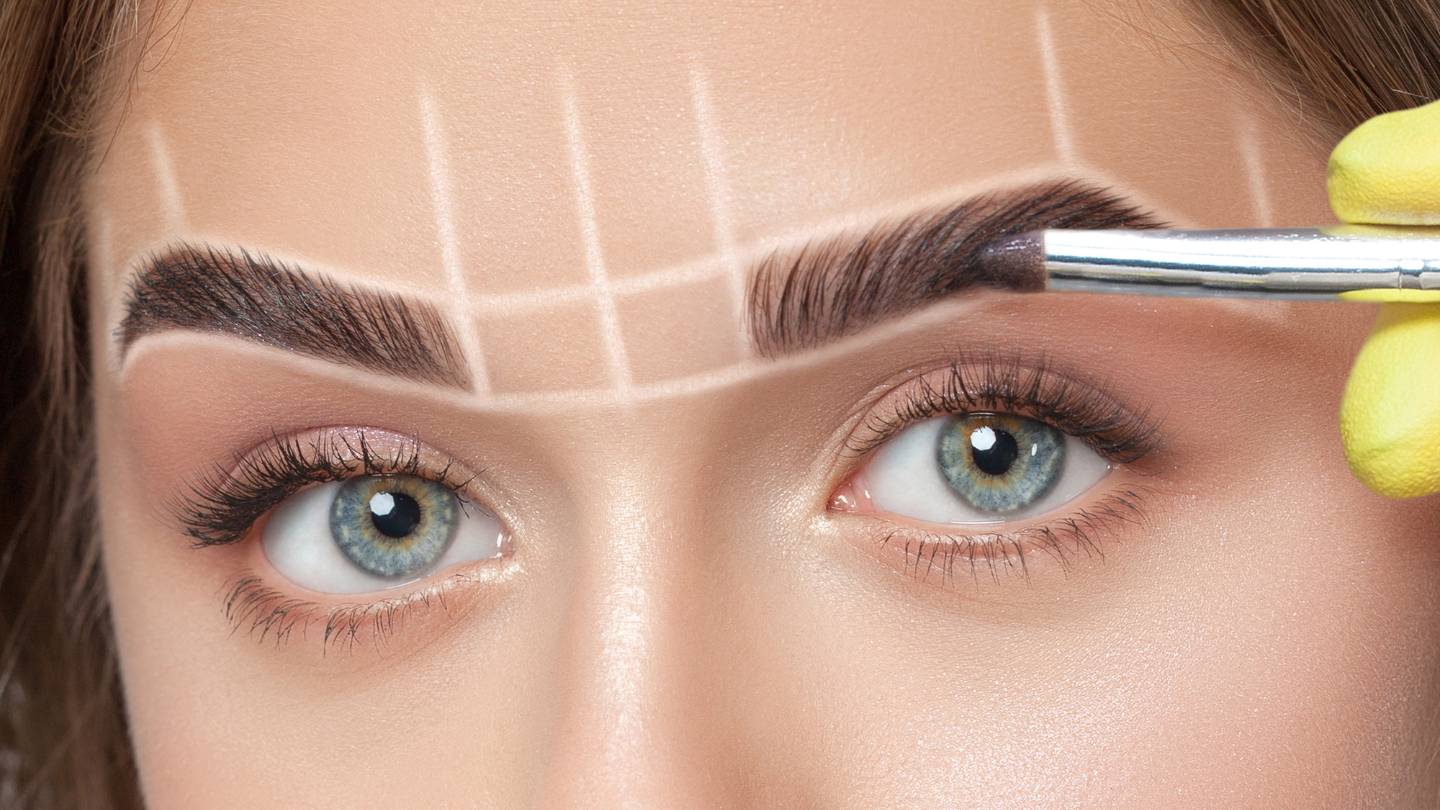To achieve perfectly shaped and defined eyebrows, many individuals turn to the popular cosmetic procedure known as microblading.
This semi-permanent technique involves the precise application of pigment to create natural-looking eyebrow strokes, enhancing the overall appearance of brows.
While microblading has gained widespread popularity for its ability to provide a long-lasting solution to sparse or uneven eyebrows, individuals considering this procedure often question,
In this blog, we delve into the various aspects of microblading, addressing the associated risks and potential side effects to empower individuals with the knowledge necessary to make informed decisions about this eyebrow-enhancing technique.
Some Facts About Microblading
In order to make an informed decision about microblading, it's helpful to have some background knowledge of the operation.
- The process involves a skilled aesthetician or microblading artist making small incisions on the skin of your eyebrows using portable instruments.
- When performing microblading, a skilled artist must be careful not to injure your brow skin by making tiny incisions.
- The therapy takes a few hours, and following the initial operation, the eyebrows appear darker.
- Even while microblading creates completely natural brows, getting the perfect set could take a while.
- The outcome of the procedure depends on the microblading artist.
What You Should Be Aware Of
The hazards of microblading & permanent makeup tattooing, like those of any cosmetic surgery, are real.
Remember that the pigments used in such cosmetic procedures may contain additives not regulated by the Food & Drug Administration (FDA).
Hence, before getting microbladed, knowing what to expect is crucial.
Conduct Your Research
Consider the salon carefully before deciding to get microblading done; they are one of the more critical factors. Microblading is best performed by a certified esthetician with the necessary education and training.
It is important for anyone thinking about getting microblading to take precautions, as rules can differ from one state to another.
If you are considering getting microblading done, research the qualifications of each esthetician you're considering seeing at a high-quality salon or spa.
Permanent makeup artists and microbladers who have earned certification from the Society of Permanent Cosmetic Professionals (SPCP) are more qualified and respected in the industry.
If you are looking for qualified technicians and estheticians, you can find them through one of these groups.
Reaction To An Allergy
Although cases of allergic responses to the organic pigments utilised in the treatment are uncommon, they do occur. So, make sure to enquire about the pigments used and the method used to certify allergies with the esthetician.
Infection
The skin is broken during microblading, which poses a significant risk of infectious disease transmission, such as HIV and infections caused by bacteria.
Among the most common vectors for the spread of disease are instruments and other items that lack proper sterility. Before the procedure begins, it is crucial to sterilise all equipment to prevent the spread of infection.
Semi-permanent
Imperfect microblading is not easily correctable. If this happens, the patient must pay more to deal with issues and fix the treatment. Thoroughly researching the esthetician and the facility where one is thinking of getting microblading done is the surest approach to guarantee a successful procedure.
What Are Some Of The Most Common Microblading Side Effects?
Negligence in cleanliness and hygiene on the part of the microblading specialist increases the risk of adverse effects.
Scar Tissue Between The Brows
One potential adverse impact of microblading is the development of scar tissue on the eyebrows, which can occur if the artist is inexperienced. The risk of deep pigmentation increases if the operator uses excessive force during the procedure. Consequently, the eyebrows are damaged, and scar tissue is formed on the brow.
It would help if you verified the microblading artist's credentials before committing to their services. Bad brows created by incompetent professionals can lead to scar tissue, and unfortunately, this type of damage is sometimes irreversible. This kind of adverse reaction to microblading is something no one wants.
Bad Ink Use: Microblading Side Effects
One of the reasons microblading can have negative effects is utilising low-quality ink, which contains ingredients known to induce such side effects. They have hazardous elements such as nickel, mercury, and iron oxide.
To keep microblading adverse effects to a minimum, the artist operating must be well-versed in the ink's composition and understand why using high-quality ink is crucial. If the operator utilises toxic ink during the procedure, the risk of microblading adverse effects increases.
Eyebrows Of Different Colours
Seeing brows of varying shades might be intriguing. Unfortunately, microblading adverse effects might occur with unintended multi-coloured eyebrows when the colour fades. Please tell us when this occurs. This is because of how the pigments for the operation were chosen. Choosing high-quality ink is crucial to the success of your microblading project, as previously said.
Due to the iron oxide ink, you might see a change in the colour of your brown brow—from orange to red to yellow-orange to pink. In addition, if the ink comprises a tricolour blend, one of the colours may fade before the remaining two.
Many of these inks include heavy metals, some of which can remain in the body for up to ten years. One of the worst things that can happen due to microblading is this.
Quality Microblading Inks Matter
To avoid microblading adverse effects and ensure clients get their money's worth for at least a couple of years before needing a touch-up, it's crucial to understand the significance of the pigment used for the treatment.
Organic micro pigment foundations are excellent ink, unlike pigments of three colours. If you want your microblading done without touching up your eyebrows for at least three to five years after the operation, these are the inks to use.
Emotional Turmoil
When microblading goes awry, it can be a terrifying experience for the client. Damage to a client's eyebrows and potential psychological distress could result from a technician's lack of training and expertise in the subject.
Find the most reliable microblading specialist to entrust your brows to before you decide to have those gorgeous eyebrows and the "woke up like this" look. To avoid regretting later on, pick wisely because these will be your brows, and you'll be sporting them for a while.
Microblading Risks And Side Effects
Microblading hazards and side effects can manifest when an artist doing the operation lacks the necessary expertise, causing the client to undergo a horrific ordeal. We hope none of these people experience the dangers associated with microblading.
Infection
If the microblading specialist uses unclean instruments or equipment throughout the process, there is a possibility of contracting an infection afterwards. The tools may be safe within the sealed packaging, but that is no assurance. Therefore, a microblading specialist should ensure they are clean before employing the tools.
Allergic Reaction
A technician's use of ink poses the risk of allergic reactions for certain individuals. To find out if microblading is a good option for you, it's important to discuss your condition with your artist.
Keloids
If you have had microblading in the past and had keloids—scars that grow larger than normal—you run the risk of getting them again.
Questions To Ask A Microblading Professional
Feel free to consult a professional with these enquiries to alleviate any concerns.
- Is each client given a new needle?
- Is it necessary to sanitise the microblading instruments before each use?
- What is your experience level with microblading?
- I'd like to enquire about your available training hours.
- What is the location of your training?
Feel free to enquire about these things with a microblading artist. Because they're your eyebrows, you must follow the instructions of a trained professional.
Microblading Artist Selection
You may achieve beautifully natural-looking eyebrows with microblading, a sophisticated procedure that doesn't require much maintenance. Additionally, it enhances your sense of self-worth, especially if your everyday tasks require you to interact with others.
On the other hand, if you want your eyebrows microbladed, you need to find the correct people to accomplish it. You can find platforms where individuals propose salons or studios for microblading if you need to know someone with the qualifications to execute the service.
Considerations Before Beginning Treatment
When looking for a microblading artist, keep these traits in mind.
- They should be responsible for various tasks and consistently deliver outcomes since this demonstrates that the artists serve a diversified clientele that has not experienced any negative consequences from microblading.
- You should look at their previous work to see if they have dealt with people of many ages and races who underwent the operation.
- Without griping over the microblading side effects, the artists maintain consistency in colour, style, density, & thickness for all of their clients.
These characteristics give you peace of mind that the hiring microblading expert will perform the process correctly.
Complications
Some of the possible short-term negative effects of cosmetic tattooing include:
- little bleeding
- little bruises
- tenderness
- a bit darker than expected for around a week to ten days
Patients taking blood thinners have an increased risk of bleeding and bruising during and after the surgery, according to the SPCP.
Infections & allergic reactions are among the more significant potential consequences.
It is possible to reduce the risk of infection by taking the following steps, even when technicians work in clean environments:
To prevent the spread of germs from unclean hands to tattooed skin, follow aftercare instructions in the letter.
Infection symptoms could encompass:
- the colour red
- growing discomfort
- red, itching pimples developing inside the tattoo
- the flu
- feelings of cold
- pus
- open wounds
To minimise harm, visit a dermatologist or physician promptly as these symptoms emerge.
Cosmetic tattoos also seldom cause allergic responses. We may have to:
- itching
- redness
- swelling
- blisters
- scaly patches
- deep lumps
- skin crusting
- watery fluid
One way to prevent these problems is to be careful immediately. Before scheduling an appointment, you should research the salon's compliance with microblading regulations in your state and city.
The SPCP suggests the following safety measures:
- The technician should employ sterile, new needles and remove them from their packaging as the patient watches.
- To avoid cross-contamination, the technician should wear fresh protective gear, such as gloves and an apron.
- There shouldn't be any dirt or dust floating around, especially if someone has filed their nails recently.
- The tech should look tidy and presentable.
- A brand-new, one-time-use chair cover ought to be ready.
Before surgery, one should ensure that these protocols have been followed.
Healing Suggestions
Any instructions given by the technician must be carefully followed. Along with the procedure, the technician should give you topical medication and an instruction leaflet for aftercare.
To aid in the recovery procedure:
- When the technician gives the go-ahead, use a gentle soap and either cool or somewhat warm water to keep the region clean.
- The technician should supply the ointment or cream indicated for application; this will aid the skin in retaining moisture and creating a protective barrier.
- Keep the skin from drying out; it will recover faster if kept moist.
- Never use antibiotic ointment on your microbladed eyebrows; anyone who thinks they may be sick should consult a doctor before doing so.
It is also critical to avoid:
- too much time in the sun
- pollen and various kinds of refuse
- drink to excess
- stroking or caressing the forehead
- health spas
- face peels
Conclusion
Microblading is a popular cosmetic treatment that involves carefully applying pigment to make eyebrow strokes that look natural and improve the look of the eyebrows as a whole. As with any tattoo or microblading, there are some risks. For example, some additives used are not controlled by the FDA.
To make an informed choice about microblading, you need to know about the procedure, do research, and think about the skills of the esthetician and the facility. Some common side effects are not taking care of your health and cleanliness, getting scar tissue between your eyebrows, and not using ink correctly. Artists who aren't very good may use cheap ink that contains harmful chemicals like nickel, mercury, and iron oxide, which can have bad effects.
It is important to use good ink for microblading so that clients don't have any bad effects and get at least two years of use before they need to be touched up. Organic micro pigment foundations are great for this because they cover up thin or uneven eyebrows for a long time without having to touch them up.
Anyone thinking about getting microblading to improve their eyebrows needs to know about the risks and possible side effects. Before getting the procedure done, you should do study on the salon, pick a qualified esthetician, and be aware of any risks or side effects that might happen.
Microblading can be a dangerous process that can leave the client emotionally and mentally upset. To avoid risks and side effects like infections, allergic reactions, and keloids, it is important to find a dependable microblading specialist.
You should think about a microblading artist's experience, amount of training, and availability of training hours when making your choice. They should have a wide range of customers and keep the same colour, style, density, and thickness.
Some short-term problems that can happen after getting a cosmetic tattoo are bleeding, bruises, soreness, and a darker look for about seven to ten days. Blood thinners might make it more likely that you will bleed or bruise during and after surgery.
Infections and allergic responses are two major effects that could happen. To lower the risk of getting an infection, make sure the technician is clean and neat, follows the aftercare directions, and wears new protective gear. Make sure that these steps have been taken before surgery.
Some things that can help the skin heal are following the technician's guidelines, using mild soap and water, putting on the right cream or ointment, keeping the skin moist, and never putting antibiotic ointment on microbladed eyebrows. Stay away from too much sun, pollen, drinking too much, touching or caressing your forehead, health spas, and face peels.
Pick a trustworthy microblading expert is important for getting beautiful, natural-looking eyebrows and feeling better about your own self-worth.
Content Summary
- Microblading is a semi-permanent technique to create natural-looking eyebrows.
- The procedure involves skilled artists making small incisions in the brow skin.
- Post-treatment, eyebrows often appear darker initially.
- The quality of microblading heavily relies on the artist's expertise.
- Pigments used in microblading may contain unregulated additives.
- Choosing a certified esthetician and a reputable salon is critical.
- The Society of Permanent Cosmetic Professionals (SPCP) certifies qualified microblading artists.
- Allergic reactions to organic pigments used in microblading are rare but possible.
- The procedure carries a risk of infectious disease transmission.
- Sterilising all equipment before the procedure is essential to prevent infection.
- Imperfections in microblading are not easily correctable and can incur additional costs.
- Inexperienced artists increase the risk of scar tissue formation in brows.
- The use of low-quality ink can lead to harmful side effects, including skin damage.
- Poor-quality ink can cause eyebrows to fade into unintended multi-colours.
- High-quality inks are crucial for successful microblading and long-lasting results.
- Emotional distress can result from botched microblading procedures.
- Researching the microblading specialist's qualifications is necessary to avoid risks.
- Unclean instruments or equipment can lead to post-procedure infections.
- Discussing potential allergic reactions with the artist is important.
- Those with a history of keloids should consider the risks before microblading.
- Asking about the sterilisation of instruments and artist experience is advisable.
- Microblading enhances self-esteem, especially in public-facing roles.
- Selecting the right microblading professional requires thorough research.
- A diverse portfolio and consistent outcomes are key traits of a good microblading artist.
- Short-term side effects include minor bleeding, bruising, and tenderness.
- Patients on blood thinners may experience increased bleeding and bruising.
- Infections and allergic reactions are significant potential complications.
- Following aftercare instructions is crucial to prevent infections.
- Symptoms of infection include redness, pain, pimples, flu-like symptoms, and pus.
- Seeking medical attention promptly is important if infection symptoms arise.
- Allergic reactions to cosmetic tattoos are rare but can include itching and swelling.
- Researching salon compliance with state and city regulations is recommended.
- Technicians should use sterile, new needles for each client.
- Wearing fresh protective gear and maintaining a clean environment is essential for technicians.
- A clean and presentable technician indicates a professional service.
- Carefully following aftercare instructions aids in the healing process.
- The technician should provide appropriate ointments and creams for post-care.
- Keeping the skin moist but not wet is important for recovery.
- Avoiding antibiotic ointment on microbladed eyebrows unless advised by a doctor.
- Exposure to sunlight, pollutants, and excess alcohol should be avoided post-microblading.
- Touching or stroking the treated area can hinder the healing process.
- Avoiding health spas and facial peels is recommended during recovery.
- Microblading poses real risks and side effects, like any cosmetic surgery.
- The outcome of microblading depends significantly on the artist's skill.
- Awareness of the pigments and techniques used is essential for clients.
- Regulations for microblading vary, necessitating careful consideration.
- A well-informed decision about microblading involves understanding potential risks.
- Ensuring a microblading artist's credentials can prevent undesirable outcomes.
- The choice of ink affects the safety and appearance of microblading.
- Selecting a proficient microblading professional is key to achieving satisfactory results.
Frequently Asked Questions
Like any cosmetic procedure, microblading comes with potential risks and side effects. These can include infection, allergic reactions, and dissatisfaction with the results.
Common side effects include redness, swelling, and mild discomfort in the treated area. These usually subside within a few days.
Healing times vary, but the initial healing process typically takes about two weeks. However, complete healing and fading of the pigment can take up to 4-6 weeks.
Yes, there is a risk of infection if proper aftercare instructions are not followed. It's crucial to keep the treated area clean and avoid exposure to bacteria.
Yes, some individuals may be allergic to the pigments used. Patch tests are recommended to identify potential allergies before the full procedure.



